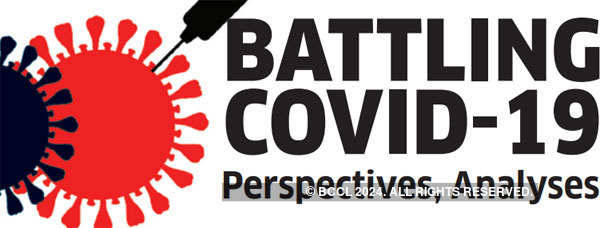[ad_1]
India is swiftly coming to terms with a rare unforecastable impact event. As we approach April 15, policymakers will have to carefully analyse a tough trade-off – continued lockdown at the cost of longer-term economic devastation, or a rational ‘unlocking’ allowing India to ‘return to work’.
A simplistic way to arrive at the value of the loss in economic activity would be to compute the loss on a daily basis due to the lockdown. Based on pre-Covid-19 projections of India’s GDP, the average daily GDP value for FY2021 was estimated at about $8 billion. A 30-day lockdown would, thus, imply a maximum possible loss of $240 billion. The actual loss, however, would be lower, and a part of the loss could be recouped in H2 FY2020 as latent demand is realised. However, here is a more realistic assessment.
Hit on Consumption Demand
- ·Durable and semi-durable goods account for about 11% of private consumption (private final consumption expenditure, PFCE) demand.
- ·Non-durable goods account for about 39% of PFCE and include essential goods, with food & beverages accounting for more than 75%, which is unlikely to be impacted significantly.
- ·Services account for about 50% of consumption demand and have been the key growth-driver. Demand destruction could play out in services segments in the next few quarters. Unlike durables and semi-durables, consumption in some service segments may see a permanent loss (e.g. cinemas, restaurants, etc).
- Analysis of consumer wallets shows that the Covid-19 outbreak could cast a shadow on items equivalent to about 30-35% of India’s consumption. Purchase of durables such as clothing and footwear, furnishings, vehicles and durables for recreation, etc may be postponed. However, expect demand destruction in items such as transport services, recreation and culture, restaurants and hotels and beverages etc, in the immediate quarters if lockdown is not lifted.
- In the more benign case, in which activity is hit for only about 30 days and resumes post the current 21-day lockdown, consumption demand could be hit by about 1.6-1.8 percentage points (pp) in Q4 FY2020 and Q1 FY2021. This would translate into a nominal loss of about $13.5 billion.
- The worst-case scenario is impossible to arrive at, and is thus ‘unquantifiable,’ given the number of uncertainties and scenarios — how intense will the Covid-19’s direct impact be on health and lives; how long will it endure; what policy measures are taken to mitigate the impact, etc.
Based on the above caveat, and past experiences of such pandemics, the worst-case scenerio of about three months of lockdown could imply 11.5 pp on Q1 FY2021 consumption growth, as compared to the earlier projections, and drag down India’s overall GDP into negative territory. The loss in nominal terms could be as high as about $6.5 billion in FY2020, and about $45 billion in Q1FY21. This would be crippling in all senses.

Manufacturing Output Loss, Hit to Exports & Investments:
If there is a ‘complete shutdown’ of factories throughout India for one month, real manufacturing gross value-added (GVA) is estimated to fall by 5% in FY2021. This would be the first instance of a fall in manufacturing GVA since FY1992 and result in a loss of about $31 billion in value-added for India’s manufacturing sector.
- ·This sector would also be affected owing to supply linkages with the world. The share of foreign value added in India’s manufacturing output is quite high, at about 35%. This is even higher than 50% for some industries such as computers and electronics.
- Investment demand is certain to vanish for the near future.
- Projections for the hit to global growth are quite varied. Nevertheless, a sharp near-term hit is certain. In such a scenario, India’s exports and capex are likely to take a big hit.
Financial risks to companies:
- Financial risks lead to a hit on real economic activity. Hence, the first risk will be from financial tightening. There’s a high likelihood of a substantial revenue disruption, leading to potential liquidity challenges, which could eventually morph into a solvency crisis for businesses. Corporates could get hit through falling equity prices, widening credit spreads and risk aversion among lenders to lend even before demand and production get impacted significantly.
- There will be an urgent need to stress-test companies for funding (bank and non-bank) risks, forex exposure, ratings triggers, financial covenants, cross-defaults and material adverse effects.
- Also, the recovery may not be a quick bounce-back. Hence, companies must plan for multiple quarters of lower revenue and cash flows.
The actual overall growth out-turn will depend on the intensity and duration of the epidemic, and a part of these losses are likely to be recovered in the latter part of FY2021 — if there is normalisation of economic activity and curbs are removed carefully.Also, timely and continuing government interventions (monetary, fiscal and administrative), if done effectively, will help cushion the hit. Hence, most FY2021 GDP forecasts now stand at about 2-3% (as opposed to earlier estimates of about 6%).
However, if the situation gets unwieldy, or is mishandled, there will be a far bigger price to pay.
The writer is chief economist, Mahindra & Mahindra. Views expressed are his own.
Inputs provided by Rahul Agrawal
[ad_2]
Source link
